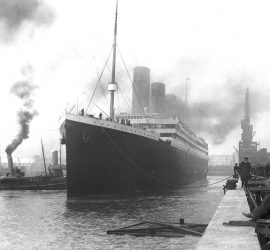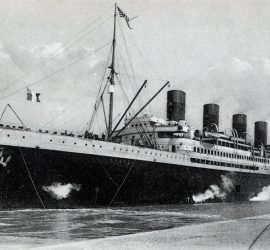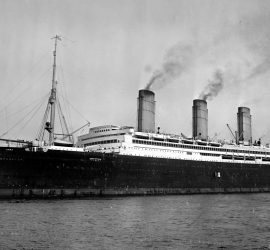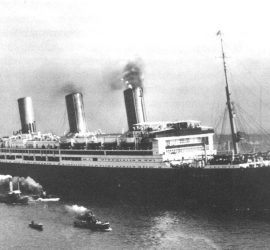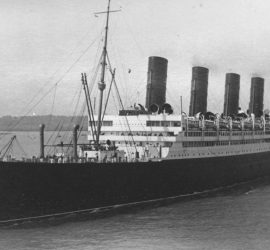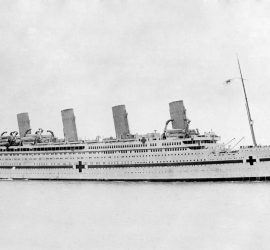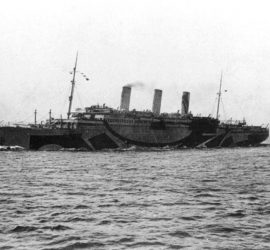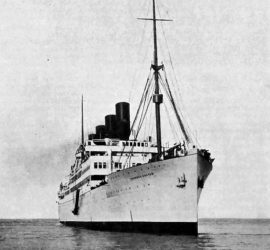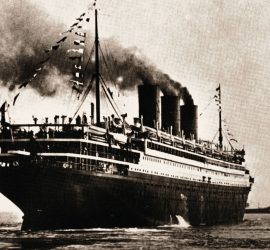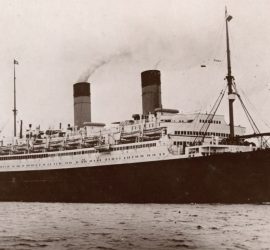1912 / The second of the Olympic-class trio, the name Titanic would become synonymous with hubris and tragedy when she struck an iceberg and went down on her maiden voyage, resulting in great loss of life.
Daily archives: March 28th, 2018
1912 – 1935 / As the only French liner to sport four funnels, the second France was also noteworthy for her lavish interiors. She survived World War I, serving as an auxiliary cruiser, a troop transport and a hospital ship.
1913 – 1938 / Also known as Berengaria / The first of Germany’s great pre-war trio, their defeat in World War I saw the ship transferred to Cunard ownership and given a new name. She flew the British flag for the rest of her career, and was sold to Jarrow shipbreakers in 1938.
1914 – 1938 / Also known as Leviathan / The second ship of the great HAPAG trio, Vaterland was seized and used as the allied troop transport USS Leviathan during World War I. Handed over to the United States Lines after the war, she became the company flagship and the largest ship in the US merchant fleet.
1914 – 1950 / A unique vessel in the Cunard fleet, the Aquitania was commissioned as a larger but slightly slower companion to the Mauretania and Lusitania. She enjoyed a long, profitable career and saw military service in two world wars.
1915 – 1916 / The third and largest of the Olympic-class trio, the Britannic would unfortunately never carry a single paying passenger. While serving as a hospital ship during World War I, she was sunk in the Mediterranean.
1917 – 1918 / Also known as Statendam (II) / Launched for the Holland-America Line, she was requisitioned by the British for wartime use as a troopship. In that role, she was unfortunately torpedoed and sunk after only a year in service.
1921 – 1958 / As a four-funnelled ship not on the North Atlantic run, Union-Castle Line’s Arundel Castle was of a rare breed. She was later rebuilt with two funnels, and served profitably for almost four decades before being scrapped.
1921 – 1947 / Another CGT masterpiece, the Paris followed the company line in offering comfort and amenities rather than speed. Unfortunately, she suffered fires two times in her life, the second of which led to her capsizing in port shortly before World War II.
1922 – 1936 / Also known as Columbus / Originally a German ship, her construction was interrupted by World War I. Handed over to White Star after the war and renamed Homeric, it took several more years to complete her. She then served as a British ship for a little more than a decade, before being sent to the breakers.

